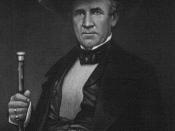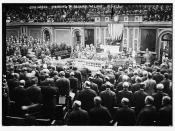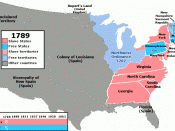Sectionalism, causes and effects.
Throughout the nineteenth century there were many historical issues that plagued our developing country with a sectional crisis. This crisis was spawned by issues involving slavery, abolitionism, women's rights, the emergence of a Republican party, and a growth of varying sides of nationalism. However, history taught us a bloody lesson that this sectionalism boiled over into violence, and was eventually subdued by a costly civil war. The lessons learned from this crisis remain to be seen that developing economic, political and social issue, can lead to historical disaster. It is important that these lessons be learned from and never repeated. The issue of slavery in the territories made conflict impossible to avoid. Territorial expansion generated disputes so frequently that the nation never enjoyed any breathing space. As conflict over slavery in the territories kept occurring, its influence on policy and effect on the government enhanced. Every Southern victory increased fear of the slave power, and each new expression of free soil sediment, alarmed slave holders and made them more insistent in their demands.
The issues of expansion as it pertains to slavery in the 1840's and 50's led to the Civil War.
In 1846, Congress and President Polk recognized a state of war between Mexico and the U.S. in order to defend the Texas border. This declaration of war led to controversy between the political parties. The small minority of anti-slave Whigs agreed with the abolitionists who felt the war with Mexico was a plot to extend slavery. The dispute over the justification of the war fed Northern fear of the so called Slave Power, which said that the institution of slavery controlled the South and hoped to dominate the Nation. No southern Whig could oppose the war once slavery became the issue.
David Wilmot proposed...


